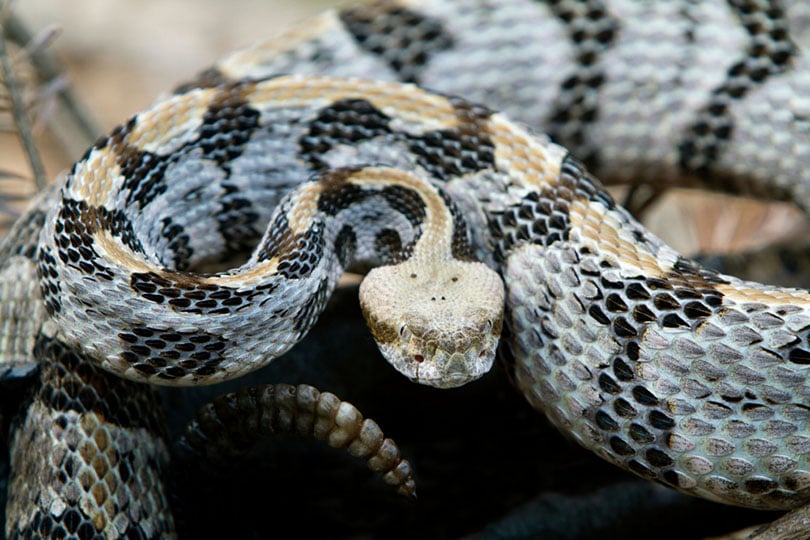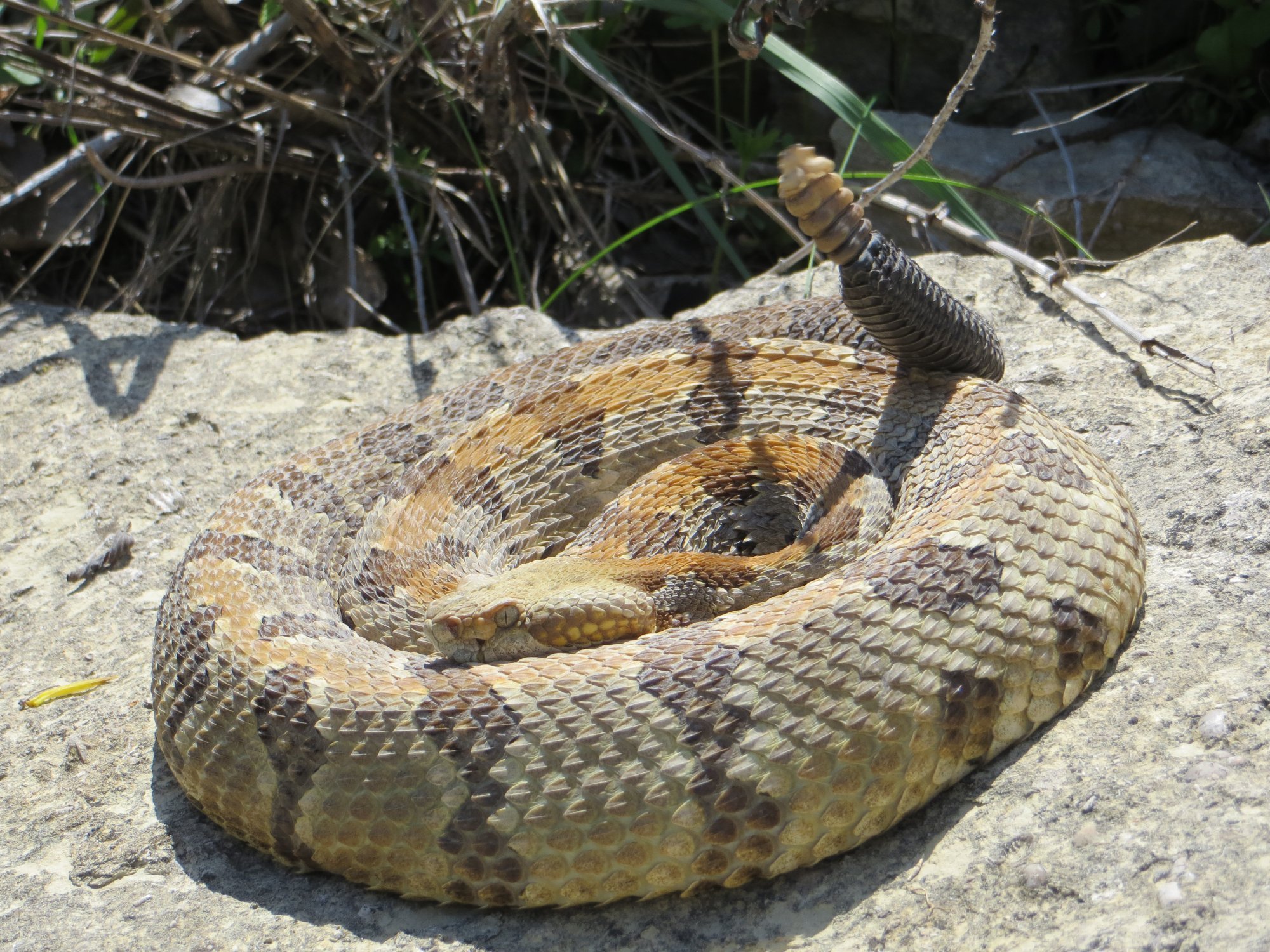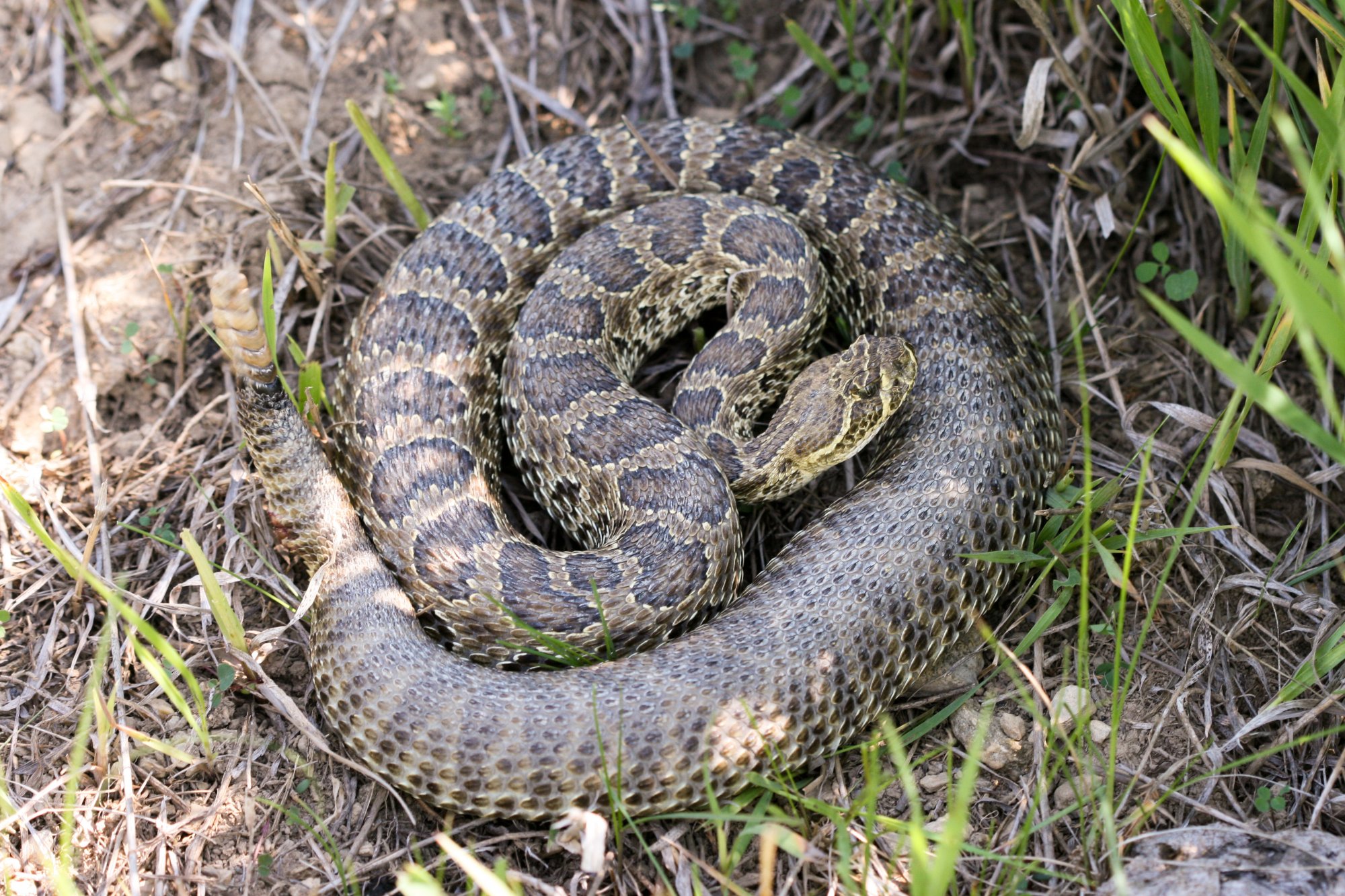Rattlesnakes are one of the most iconic groups of North American snakes due to the characteristic “rattle” found at the tip of their tails. Iowa is home to three types of rattlesnakes, which are the Timber Rattlesnake, Prairie Rattlesnake, and Massasauga Rattlesnake.
It is important to note that there are other species of non-venomous snakes in Iowa that may resemble rattlesnakes. In this article, we will explore the three types of rattlesnakes found in Iowa and provide information on their habitats and characteristics.
You are reading: Discover The 3 Types Of Rattlesnakes In Iowa

3 Types Of Rattlesnakes In Iowa
Timber Rattlesnake

The Timber Rattlesnake (Crotalus horridus) is the most widespread rattlesnake species in Iowa. They are a large and heavy-bodied species that can measure from 36 to 60 inches in length, with the record being 74 1/2 inches.
Timber Rattlesnakes have a diamond-shaped head that is set off from the relatively thin neck, and elliptical pupils in bright light with a heat-sensitive pit between the eye and nostril on both sides of the head. They are dangerously venomous and are protected in several counties in Iowa.
Timber Rattlesnakes are found throughout most of the southeastern United States and range northward from Iowa into Minnesota and Wisconsin via a narrow band along the Mississippi River. In Iowa, they are found along the Mississippi River and in various areas in the southern third of the state.
Read more : Discover 2 Types Of Rattlesnakes In Pennsylvania
Timber Rattlesnakes live in the same habitat as eastern milk snakes and prairie ringneck snakes in Iowa, which are steep bluffs with rocky outcroppings.
They favor south and southwest sides of the bluffs and spend most of their time in the sunny open areas surrounded by forest. They overwinter in dens that travel into the sides of the bluff, and in southern Iowa, they are found along rocky road cuts that are surrounded by forest.
Prairie Rattlesnake

The Prairie Rattlesnake (Crotalus viridis) is a venomous pit viper species that can be found throughout the midwestern United States, including Iowa. They are a large and heavy-bodied species that can range in length from 15 to 60 inches.
Prairie Rattlesnakes have a triangular head, blunt nose, narrow neck, and stout body, and their skin color can range from pale green to brown with a series of brown or black blotches ringed with a dark and then light line. They have a rattle-tipped tail that they shake to warn potential predators, and their fangs are hollow and hinged, allowing them to be folded back against the roof of the mouth.
Prairie Rattlesnakes are found mostly in grasslands and prairies but also in woods, forests, brush, caves, rock ledges, and alongside streams. They tend to avoid desert areas and are found from near sea level up to over 9000 ft (2700 m) of altitude in Wyoming.
Prairie Rattlesnakes prey on a variety of animals, including small mammals like prairie dogs, voles, shrews, ground squirrels, small rabbits, mice or rats, ground nesting birds, and sometimes even other snakes.
Massasauga Rattlesnake
The Massasauga Rattlesnake (Sistrurus catenatus) is a venomous pit viper species that can be found in the northeastern part of Iowa. It is the smallest of the three rattlesnake species found in Iowa, with adults typically reaching lengths of approximately 18 to 30 inches.
Read more : 10 Types Of Amazing Green Lizards
The general appearance of the Massasauga Rattlesnake can vary, with some individuals having brown blotches on a gray background and others being almost completely black in color. They have a triangular-shaped head, a heavy body, and a rattle-tipped tail that they shake to warn potential predators.
The Massasauga Rattlesnake is primarily associated with wetland habitats but some populations also utilize adjacent upland habitats for parts of its life history. They are a timid snake and will typically remain motionless when threatened, relying on their cryptic coloration to blend into their surroundings.
The Massasauga Rattlesnake is a relatively docile and sluggish animal unless provoked, and their venom can be lethal to humans.
FAQS
1. Are rattlesnakes common in Iowa?
No, rattlesnakes are not common in Iowa. However, there are three types of rattlesnakes that can be found in the state.
2. What are the three types of rattlesnakes found in Iowa?
The three types of rattlesnakes found in Iowa are the Timber Rattlesnake, Prairie Rattlesnake, and Massasauga Rattlesnake.
3. Are there any non-venomous snakes in Iowa that resemble rattlesnakes?
Yes, there are several non-venomous snakes in Iowa that may resemble rattlesnakes, such as the Fox Snake, Bullsnake, Common Water Snake, Prairie Kingsnake, and Milk Snake.
4. Are rattlesnakes dangerous?
Yes, rattlesnakes are venomous and can be dangerous to humans. It is important to give them space and avoid disturbing them if encountered in the wild.
5. What should I do if I encounter a rattlesnake in Iowa?
If you encounter a rattlesnake in Iowa, it is important to give it space and avoid disturbing it. Back away slowly and do not attempt to handle or capture the snake. If you are bitten by a rattlesnake, seek medical attention immediately.
Source: https://petstutorial.com
Category: Animals










